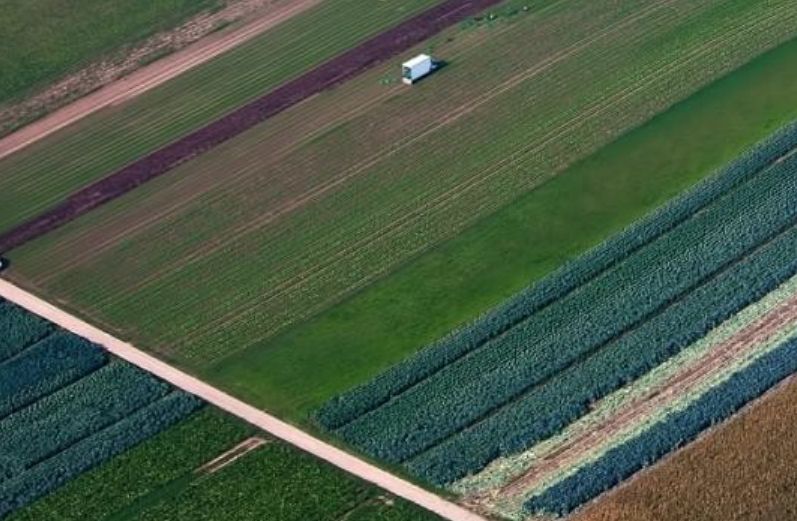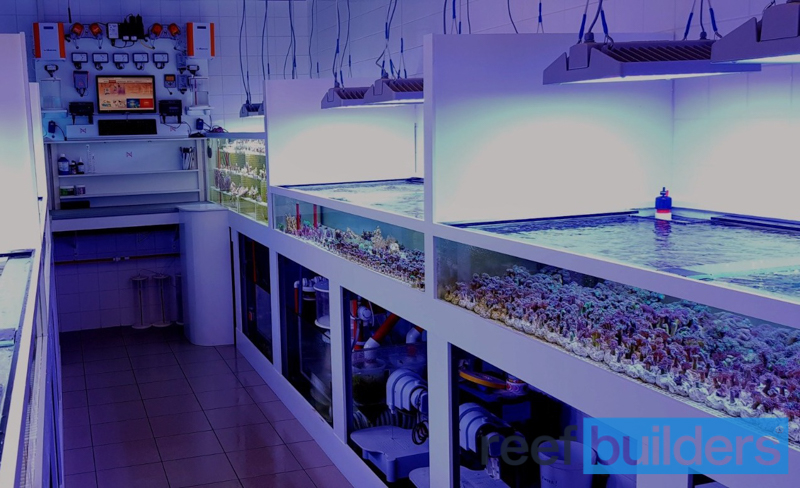In this new series, I will discuss strategies you can use with current technology to help mitigate the risk of coral disease in your reef tank. In this first installment, I will cover the benefits of polycropping.
Polycropping vs Monocropping
Often used in agriculture, these terms describe the number of species grown in one “plot” or area. Monocultures consist of a field of one species, while polycultures grow multiple species in the same space. While much of industrial agriculture utilizes monocropping, many small-scale farms utilize polycropping. While polycropping has many benefits in agriculture, we will focus on one primary benefit that cross-applies to coral: disease management.

A Brief History Lesson
In the 1800s, Ireland was a starving nation. Soon, they began cultivating the “lumper,” a strain of potatoes that grew well in Irish soil. This satisfied their needs for a time, but eventually, the food supply was obliterated by an invisible threat – an oomycete, a microscopic fungus-like protist. This blight wiped out nearly all the lumper population, leading to the Irish Potato famine in the mid-1800s.
One of the leading causes of the famine was the lack of genetic diversity in the potato population. Genetic homogeneity made it easy for the disease to ravage the crops as it significantly decreased the likelihood of natural immunity developing – especially in the short time it took for the blight to eliminate whole fields.

After this deadly lesson, much of the world looked at alternative methods for crop production. Planting multiple species of the same crop in one area led to natural resistance to disease as at least some of the harvest would survive due to natural immunity, even if a pathogen did wipe out one species. Polycropping can be more than just multiple subspecies of the same crop – there can be benefits to planting multiple crops together.
One of the most famous examples is the “three sisters” utilized by indigenous North American populations. Planting corn, beans, and squash together led to a healthier, more robust crop than growing them alone. Beans gave the soil nitrogen, which acted as fertilizer; corn acted as a bean pole; and squash helped to keep the ground moist by covering it with broad leaves.
How to apply polycropping to aquarium corals
Many people love to display their favorite types of corals in “gardens,” where they add multiple phenotypes of the same or similar species to one area of their tank. This monocropping can be problematic given that many coral pathogens are spread by coral-coral or proximity coral-water contact. Thus, a pathogenic event in one of those corals could easily lead to the entire garden being wiped out, just like the lumpers during the potato famine. This idea is even more critical when farming corals vs displaying them. I know many coral farmers grow the same species on the same racks. More and more data is coming out that mixing coral species can benefit them long-term, not just for disease prevention but also for growth.

One study has been conducted analyzing the benefits of polycropping coral. Multiple species were placed together in small groups on stone slabs in the open ocean. After seven months, growth was measured, and plots that were polycropped had overall more growth than those that were not. It’s still not understood what mechanisms led to this, but the data is exciting and may have a place for application in our aquarium.
How to set up for coral polycropping
The following schemes represent various forms of coral placement.



In the first scheme on the left, let each X in this image represent a coral of the same species. This would be an example of monocropping. A scheme such as this could be susceptible to disease, either on a rack or on a rock.
In the middle scheme, some polycropping is present with closely placed groups of similar species. While there may be some benefit here, as not all of one stock would be wiped out, large sections of coral are still vulnerable to disease.
The scheme on the right is an effective baseline for polycropping – each species (in this set of three on the right-hand scheme,) is spaced from each other adequately, which decreases the likelihood of disease passing from corals of the same species. Combined with the potential for high flow (depending on the species grown), this could serve as a very effective foundation for managing coral disease in a farm setting without the need for additives or dips.
Coral polycropping considerations
There are three primary things to consider when setting up racks or rocks for polycropping. First, select species that thrive in similar PAR and flow. One would not want to place Rhodactis with Acropora. Some combinations I have utilized myself are Micromussa x Blastomussa x Goniopora (with adequate space). All prefer low par and can do well with lower flow (even if the Goniopora can handle higher amounts).
Another combination is Zoanthids x Clove Polyps x Leathers. All these benefit from high flow as it helps to keep them clean of detritus and gives them gorgeous polyp extension. Additionally, some leathers, cloves, and zoanthids prefer higher par, which would allow you to move them up together.
Second, avoid aggressive species. This can include those that physically are, such as members of the Acanthastrea family, chalices, Galaxea, and torches. It can also include chemically aggressive ones, such as leathers with Fimbriaphyllia, as toxins from species such as Sacrophyton directly inhibit the growth of stony corals.
Third, give adequate space when constructing any schemes. I keep a single egg crate’s length around a plug on all sides, meaning the coral has a perimeter of the egg crate around it. Combining this with the poly-cropped scheme above, you can imagine the spaces as egg crates. This would provide even more space between the corals of the same species. If polycropping in a display, the distance between frags or colonies would depend on the size of the pieces as well as how large you would like to grow them out.
Additionally, while logically, it makes sense that polycropping can benefit corals via disease prevention, it may not be certain it leads to faster growth as the study was based on corals endemic to one region while our systems are composed of corals sourced globally. On top of this, chemical warfare can be much more potent in our systems due to their closed nature compared to the open ocean. Despite this, I operate my grow-out operation with polycropping and have had little to no incidence of disease spread since doing so.



